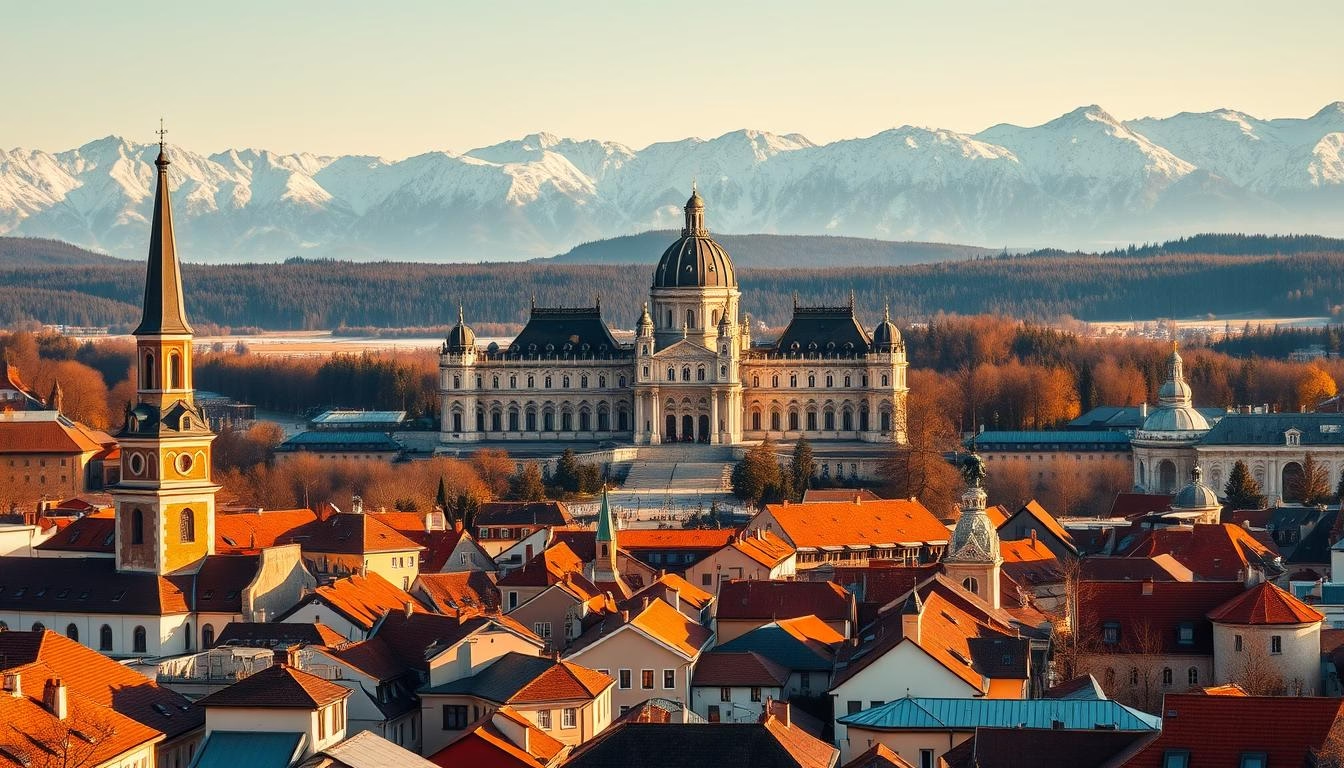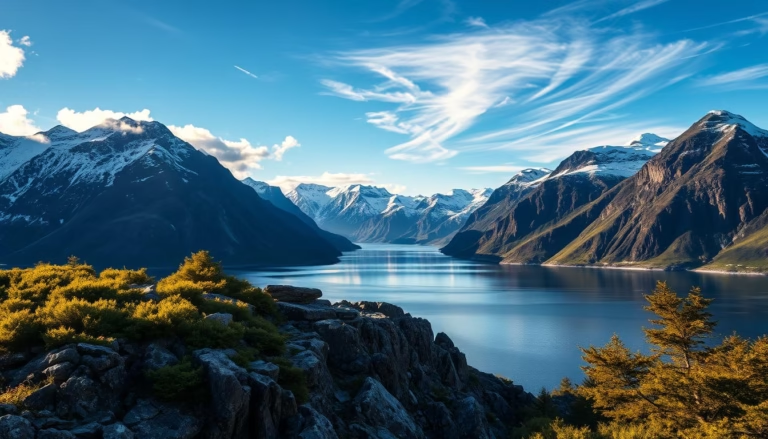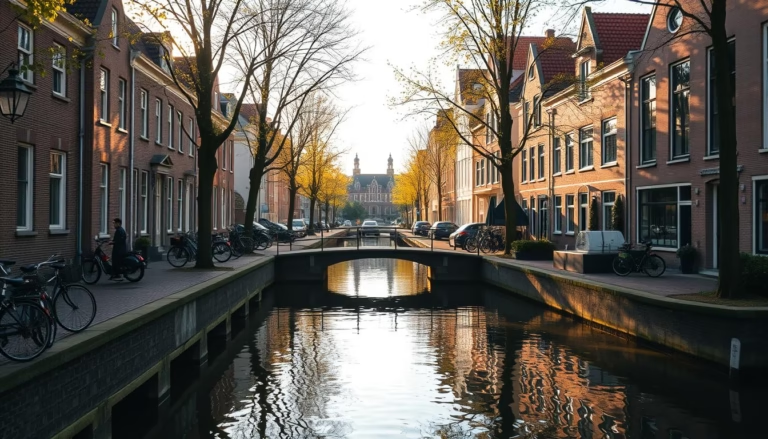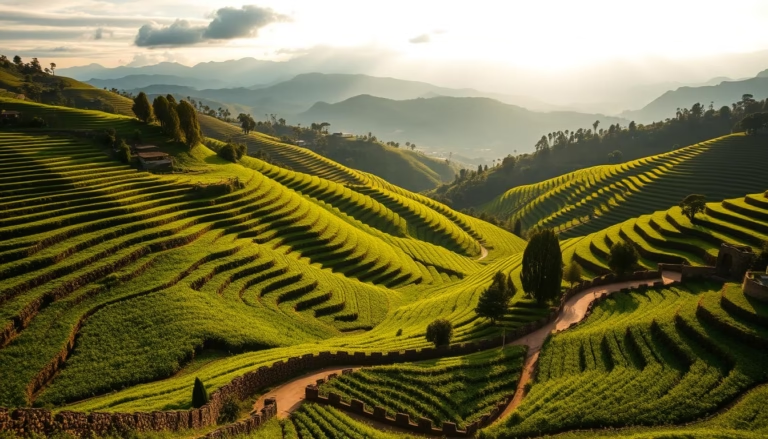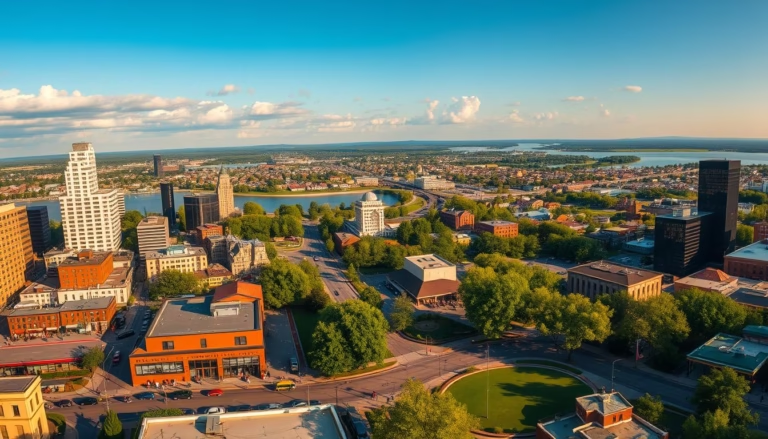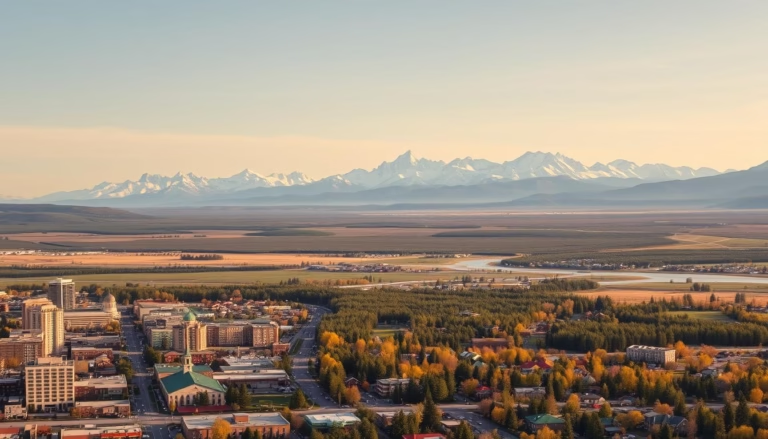Best Cities to Visit in Romania: Top Destinations
Few travelers realize Romania boasts seven UNESCO World Heritage Sites scattered across its underrated urban centers. While Bucharest grabs headlines, over 80% of the country’s cultural landmarks lie outside its capital.
This Eastern European nation blends medieval charm with modern energy. Cobblestone streets wind past Gothic cathedrals in Transylvania, while vibrant art districts buzz in revitalized industrial hubs. Thermal spas, indie coffee shops, and festivals celebrating local traditions coexist seamlessly here.
Affordability sets Romanian destinations apart. A three-course meal costs less than $15 in most areas, and boutique hotels often undercut Western European prices by 60%. Locals greet visitors with warmth, eager to share stories about their history-rich communities.
Key Takeaways
- Romania offers exceptional value compared to Western Europe
- Seven UNESCO sites enhance its urban cultural landscape
- Distinct regions provide varied experiences from medieval to modern
- Authentic local interactions define the travel experience
- Compact city layouts make exploration easy and rewarding
From Dracula lore in Brasov to Art Nouveau marvels in Timisoara, each location tells a unique story. The country’s train network connects these urban jewels efficiently, with most journeys under three hours. Ready to discover why savvy travelers are rethinking their European itineraries?
Introduction to Romania’s Vibrant Cities and Cultural History
Romania’s urban centers feel like open-air museums where every street whispers stories of empires and artisans. Centuries of cultural exchange forged a mosaic of architectural styles, from Saxon fortresses to Baroque palaces. Locals joke that “you can time-travel here just by crossing the street”—a nod to how medieval watchtowers stand shoulder-to-shoulder with Art Deco theaters.
Where East Meets West in Stone and Spirit
German stonemasons left their mark in Transylvania’s angular turrets, while Ottoman traders introduced ornate mosques to Wallachia. This blend creates surprises like pastel-colored guild halls framing Orthodox cathedrals in Sibiu. Even coffee culture tells a tale—try Turkish-style brew in Timișoara’s Austro-Hungarian cafés.
Architectural Time Capsules
Some towns froze in specific eras. Sighișoara’s 16th-century clock tower still chimes hourly, while Bucharest’s Centrul Vechi district mixes 19th-century mansions with hip cocktail bars. For deeper insights, consult this regional travel guide that maps these contrasts.
What truly defines Romania’s charm? It’s how communities preserve traditions while embracing modernity. Blacksmiths forge ironwork using medieval techniques just blocks from digital nomad hubs. This living history makes every visit a conversation across time.
Exploring the best cities to visit in romania
Romania’s urban landscapes dazzle with unexpected contrasts. One moment you’re sipping craft beer in a repurposed factory district, the next you’re marveling at 15th-century stone fortifications. This blend of old and new creates travel experiences that feel both authentic and exhilarating.
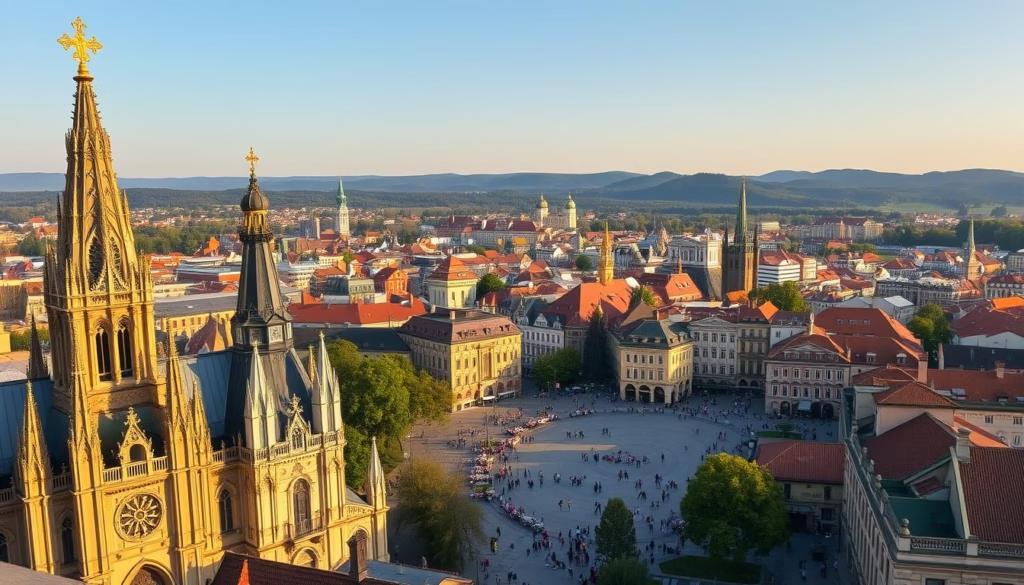
What Makes These Urban Centers Shine
Unlike crowded European hotspots, Romania’s towns prioritize local character over tourist traps. In Cluj-Napoca, indie music festivals spill into cobblestone plazas. Timișoara’s rose-filled parks sit steps from Europe’s first electric street lighting system.
Affordability amplifies the appeal. As one traveler noted: “I booked a three-night stay in a historic inn for less than a Parisian hostel bunk.” Meals featuring smoked cheeses and paprika-spiced stews rarely top $10.
These destinations double as adventure hubs. Brasov puts Transylvania’s castle trails at your doorstep, while Sibiu’s mountain backdrop invites sunrise hikes. Even nightlife surprises—underground jazz bars occupy medieval cellars in Oradea.
For curious explorers, Romania delivers layered discoveries. Attend a pottery workshop using ancient Dacian techniques, then join locals for plum brandy at a retro-chic cocktail lounge. Every visit becomes a mosaic of timeless traditions and contemporary energy.
Discover Bucharest: The Heart of History and Modern Nightlife
Bucharest defies expectations at every turn. Once called the “Paris of the East” for its tree-lined boulevards and Art Nouveau palaces, Romania’s capital now thrums with a contagious energy. Locals joke that their city wears multiple hats: part open-air museum, part 24-hour playground.
Where Grandeur Meets Government
The colossal Palace of Parliament anchors the city’s skyline. This marble-clad behemoth houses 1,000+ rooms and weighs more than three Empire State Buildings. Guided tours reveal crystal chandeliers and staircases wide enough for carriages.
Nearby, the Arcul de Triumf echoes its Parisian inspiration. Yet Bucharest’s architecture tells its own story—bullet-pocked facades from the 1989 revolution stand beside restored Belle Époque mansions.
Where Steam Meets Steaminess
As dusk falls, the city transforms. Old Town’s cobblestone lanes fill with the clink of craft cocktails. “I danced till sunrise for less than a Paris metro ticket,” recalls one backpacker. Rooftop bars overlook Orthodox domes while DJs spin in converted bank vaults.
Daylight brings quieter pleasures. Cafés along Calea Victoriei serve restaurants’ secret weapon: sour cherry pancakes. For modern relaxation, Therme Bucharest’s thermal pools sit just beyond the urban buzz.
Unveiling Dracula Legends: Bran Castle and Poenari Citadel
Romania’s landscapes hold secrets where history and myth collide dramatically. Two stone sentinels guard these stories – one wrapped in vampire lore, the other in warrior history. Their contrasting personalities reveal how legends take root in real places.
Where Fiction Meets Royal History
Bran castle winks at its Dracula fame while showcasing genuine royal treasures. Though Bram Stoker never visited, its turrets match his Gothic descriptions perfectly. Today, visitors explore Queen Maria’s art-filled chambers and learn about strigoi vampire myths in equal measure.
Fortresses of Stone and Willpower
Poenari Citadel tells a grittier story. Vlad Impaler‘s actual fortress demands sweat and determination – 1,480 steps separate modern explorers from crumbling battlements. Those who conquer the climb gain eagle-eye views of the Făgăraş Mountains and a visceral connection to Wallachia’s warrior past.
| Feature | Bran Castle | Poenari Citadel |
|---|---|---|
| Historical Connection | Dracula legend inspiration | Vlad Impaler’s stronghold |
| Physical Challenge | Gentle ramps | 1,480-step climb |
| Main Attractions | Royal furniture exhibits | Mountain panoramas |
| Best For | Family visits | Adventure seekers |
For an immersive experience, consider joining a guided Dracula-themed tour that connects both sites. Morning tours beat the crowds at Bran, while afternoon light makes Poenari’s mountain views unforgettable. Remember – the real history here proves more fascinating than any fiction.
The Charm of Brașov: Culture, Cafés, and Cable Car Views
Nestled in the Carpathian Mountains, Brașov blends medieval grandeur with alpine energy. This Transylvanian gem sits 166km north of Bucharest, drawing travelers with its storybook architecture and mountain-framed skyline. Locals call it “the crown city” – a nod to its regal towers and natural amphitheater setting.
Historic Squares and Strada Republicii
Piața Sfatului pulses with life beneath the Black Church’s Gothic shadow. Europe’s largest Eastern Orthodox church survived a 1689 fire, its soot-stained walls now housing rare Anatolian carpets. Nearby, Strada Republicii buzzes with craft breweries and boutiques selling hand-painted ceramics.
Cable Car Adventures Up Mount Tâmpa
A seven-minute cable car ride delivers jaw-dropping views from Mount Tâmpa’s summit. The Hollywood-style BRASOV sign makes perfect selfie bait, while hiking trails wind through forests home to lynxes and golden eagles. “I spotted bear tracks 20 minutes from downtown,” shares a recent visitor.
Evening brings cozy moments in cafés serving kurtoskalacs (chimney cake). By day, Catherine’s Tower reveals 16th-century defense strategies. With medieval attractions and wild nature coexisting seamlessly, this mountain-ringed city proves Romania’s urban wonders extend far beyond castle legends.
Road Tripping on the Transfăgărășan: Nature at Its Finest
Cars lean into hairpin turns as clouds skim mountain peaks along this serpentine asphalt ribbon. The Transfăgărășan Highway delivers heart-pounding vistas across its 90-mile stretch, earning its reputation as one of the world’s most spectacular driving routes. Built during the Cold War as a strategic military path, it now carries adventurers through the Făgăraș Mountains’ jagged spine.
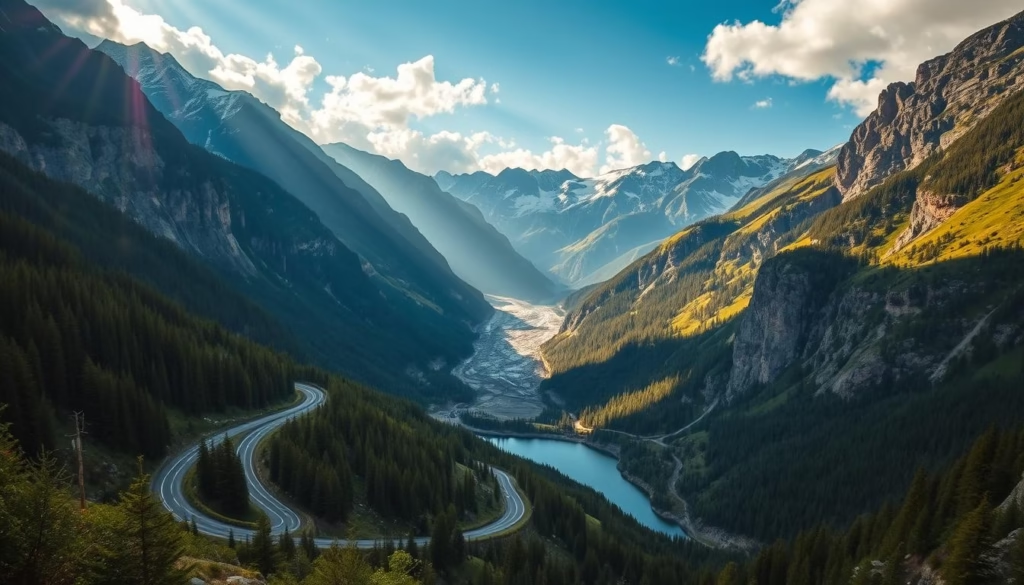
Scenic Routes and Must-Stop Viewpoints
At 6,700 feet elevation, Bâlea Lake’s mirror-like waters reflect the surrounding peaks. This highest point transforms into a winter wonderland when snow buries the road from November through May. Summer travelers find wildflower meadows and shepherds guiding flocks along ancient trails.
The BBC’s Top Gear crew famously declared this route “the best road in the world” after filming tire-screeching ascents. While thrill-seekers love the 25-minute tunnel near the summit, photographers flock to Capra Waterfall for misty rainbows at golden hour.
Local tip: Start early to beat tour buses. Pack layers—temperatures drop 30°F between base and summit. One road-tripper shared: “We stopped every 10 minutes—each turn revealed landscapes more dramatic than the last.”
Complete your trip with a visit to Poenari Citadel’s ruins. This warrior fortress bookends your mountain journey, blending automotive adrenaline with medieval history in one unforgettable Romanian adventure.
Medieval Magic in Sighişoara and Sibiu
Step into a living storybook where medieval towers guard secrets of Saxon merchants and warrior princes. Sighișoara Citadel remains Europe’s last inhabited fortress from this era, its pastel houses clustered like preserved museum pieces. Just 90 miles south, Sibiu’s rooftops peer through slanted dormers nicknamed “the city of eyes” – silent witnesses to eight centuries of history.
Wandering Through Cobblestone Streets and Clock Towers
Sighișoara’s clock tower chimes like a metronome measuring time since 1648. Climb the Scholars’ Stairs – a 17th-century covered staircase – to reach the hilltop church where students once scrambled for classes. Don’t miss the mustard-yellow house where Vlad Impaler allegedly drew first breath, now hosting a quirky weapons exhibit.
Sibiu reveals its culture through clever urban design. The Great Square showcases architecture spanning Gothic to Baroque, while hidden staircases connect the patrician Upper Town to artisan quarters below. “I found a jazz trio playing where blacksmiths shoed horses 600 years ago,” shares a recent visitor.
Both cities excel at blending education with entertainment. Sibiu’s ASTRA Museum sprawls across 250 acres of traditional village life exhibits, while Sighișoara’s clock tower museum displays medieval torture devices. Their secret? Making history feel less like textbook pages and more like stepping into a time traveler’s scrapbook.
Exploring Lesser-Known Gems: Viscri, Râșnov, and More
Beyond the well-trodden paths lie hidden treasures where time moves slower. These quiet corners preserve traditions unchanged for centuries, offering windows into Romania’s rural soul.
Fortified Churches and Traditional Saxon Villages
Viscri’s whitewashed castle-like church stands guard over a village frozen in the 1700s. A UNESCO site, its fortified walls once protected Saxon families from invaders. Today, it’s a place where artisans still craft wooden tools using ancestral methods.
Râșnov Citadel crowns a hilltop near Brașov. This 13th-century fortress offers panoramic views of the Transylvanian Plateau. Unlike crowded tourist hubs, the area retains an authentic charm – think horse-drawn carts delivering fresh milk at dawn.
These villages remain home to vibrant traditions. Locals in painted aprons bake bread in communal ovens, while children learn folk dances in schoolyards. For deeper immersion, spend a few days in guesthouses where embroidered linens and home-cooked stews create lasting memories.
Each cobblestone lane whispers stories of resilience. From hand-carved gates to sunset-lit watchtowers, these living museums prove Romania’s heart beats strongest in its quietest places.
